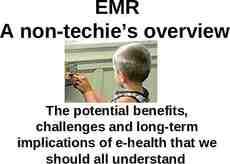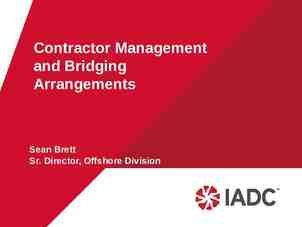LEARNING FOR THE 21st CENTURY A Report and MILE Guide for 21st
39 Slides754.00 KB
LEARNING FOR THE 21st CENTURY A Report and MILE Guide for 21st Century Skills
Introduction Today Introduction to the Partnership Why are 21st century skills important? What are 21st century skills? What is the MILE Guide for 21st century skills? What Nine Steps can you take to build momentum?
introduction to the partnership for st 21 century skills
introduction to the partnership founding members AOL Apple Cable in the Classroom Cisco Systems Dell Microsoft NEA SAP
introduction to the partnership key partners US. Department of Education Appalachian Technology in Education Consortium (ATEC) strategic partners ISTE COSN SETDA Tech Corps
introduction to the partnership mission The Partnership for 21st Century Skills is a publicprivate partnership organized to create an overall vision of how 21st century skills can be incorporated into K-12 education.
introduction to the partnership objectives Define a framework and create a common language for understanding and promoting 21st Century Skills Demonstrate how 21st Century Skills integrate with and reinforce basic skills Provide education leaders with tools, examples and strategies for action Build consensus in the public and private sectors with public education campaign to promote 21st Century Skills
introduction to the partnership methodolog y Request for Information (RFI) Research Outreach to Organizations Outreach to Individuals with Expertise in 21st Century Skills Focus Groups National Forum on 21st Century Skills
why are st 21 century skills important?
why are 21st century skills important? students Today’s education faces irrelevance unless we bridge the gap between how students live and how students learn.
why are 21st century skills important? workforce “The average person will change jobs nine times by the time he or she is 32.”Elaine Chao, U.S. Secretary of Labor
why are 21st century skills important? Relationship to no child left behind Emphasizes student achievement and requires assessments in core subjects. Skills are to be integrated in core subjects Requires that every student be technologically literate by 8th grade States, schools and districts can incorporate a broad vision of 21st century skills into their NCLB framework
what are st 21 century skills?
what are 21st century skills? Current national debate
what are 21st century skills? six elements of 21st century learning Emphasize core subjects Emphasize learning skills Use 21st century tools to develop learning skills Teach and learn in a 21st century context Teach and learn 21st century content Use 21st century assessment that measure 21st century skills
what are 21st century skills? partnership model
21st century tools Learning skils 21st century context 21st century content Core subject Element 1: core subjects Core academic subjects remain the foundation of a good education assessment
21st century tools Element 2: core subjects 21st century context 21st century content learning skills learning skills Information and Communication Skills Thinking and Problem-Solving Skills Communication Skills Information and Media Literacy Skills Problem Identification, Formulation and Solution Creativity and Intellectual Curiosity Critical Thinking and Systems Thinking Self-Direction Interpersonal and Self-Direction Skills Accountability and Adaptability Social Responsibility Interpersonal and Collaboration assessment
learning skills core subjects Element 3: 21 ST 21st century context 21st century content century tools 21st century tools Information and Communication Technologies, such as Computers, Networking and other Technologies Audio, Video, and Other Media and Multimedia Tools assessment
Learning skills 21st century tools core subjects 21st century context 21st century content Emphasize ICT LITERACY Element 2 3 assessment ICT LITERACY using 21st century tools to perform learning skills The Partnership will focus on ICT Literacy for its Year 2 Report
Emphasize 21 Century Content 21st century tools learning skills Element 4: 21st core subjects st 21st century context assessment century content Global Awareness Use 21st century skills to understand and address global issues Collaboration with other cultures and languages Financial, Economic and Business Literacy Understanding the role of the economy all the way down to personal financial choices. Ability to adapt with the nation’s economic environment using 21st century skills Knowing how to be an informed and participatory citizen. Civic Literacy Using 21st century skills to responsibly exercise rights and responsibilities at local, state, national and global levels.
Emphasize 21 Century Context 21st century tools learning skills Element 5: 21st core subjects st 21st century content assessment century context Make content relevant to students lives Take the students out to the world Bring the world into the classroom Creating opportunities for students to interact with each other, with teachers and with other knowledgeable adults in authentic learning experiences
21st century tools learning skills st core subjects 21st century context 21st century content 21 Century Assessment Element 6: assessment We must measure both core subjects and 21st century skills Standardized tests must be balanced appropriately with classroom assessments to measure the full range of students skills Classroom assessment must be strengthened and integrated with instructional process to reinforce learning
what is the MILE GUIDE for st 21 century skills?
The MILE Guide Who contributed? How did we collect the information? What did we do with the information? Results? The MILE Guide
what is the MILE guide? how to use the mile guide : Convene all stakeholders Focus on each column/category Find the corresponding level that represents your schools efforts Compare your level to the 21st century vision Use findings to develop plans for improvement
what is the MILE guide? The MILE guide can help you: Set benchmarks and goals Apply for grants Determine funding priorities Create assessment tools
MILE GUIDE: online Milestones for Improving Learning and Education in the 21st Century Mile Guide online
MILE GUIDE: online Milestones for Improving Learning and Education in the 21st Century Mile Guide Online
what is the MILE guide? LEARNING AND TEACHING Core Subjects Early Stage Transitional Stage 21st Century 21st Century Context 21st Century Content Learning and teaching Learning Skills Learning Tools Assessment Pedagogy Professional Development
what is the MILE guide? LEADING AND MANAGING Vision Early Stage Transitional Stage 21st Century Equitable Educational Opportunity Planning and Allocating Resources Infrastructure and System Integration Leading and Managing Knowledge and Skills Policy making Accountability
what is the MILE guide? PARTNERING Parents Early Stage Transitio nal Stage 21st Century Community Partnering Higher Education and Teacher Preparation Content Providers Business
what is the MILE guide? key stakeholders in the public sector Federal Policymakers State Policymakers Local Policymakers
what is the MILE guide? key stakeholders in the private sector Businesses Families and Parents
what is the MILE guide? Key stakeholders in Education K-12 Education Leaders Youth-Serving Organizations Higher Education Content Providers Schools of Education Researchers Professional Development Organizations
what nine steps can you take to build momentum?
nine steps to build momentum Embrace a powerful vision of public education that includes 21st century skills Align leadership, management, and resources with educational goals Assess where schools are now Identify the 21st century skills to focus on Develop a professional development plan for 21st century skills
nine steps to build momentum (continued ) Make sure students have equitable access to a 21st century education Begin developing assessments to measure student progress in 21st century skills Collaborate with outside partners Plan collectively and strategically for the future
Partnership for 21st Century Skills www.21stcenturyskills.org











































